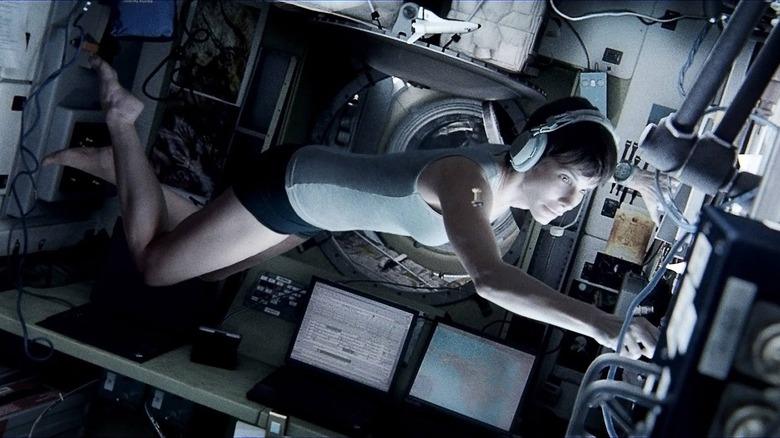The Most Inaccurate Space Movie Ever According To Science
There has been a never-ending stream of space-based films over the past few decades, from the 1968 Stanley Kubrick sci-fi epic "2001: A Space Odyssey" that inspired much of the genre to modern films with epic visuals like "Interstellar" and "The Martian." Despite their wild plots, those latter two movies have actually been hailed by scientists as having some of the most accurate depictions of the theories and foundations astronauts would use in real life. At least, they're the closest to what would probably happen. We haven't brought humans to Mars yet and we certainly haven't achieved lightspeed travel to reach other solar systems — much less had a human inside of a black hole.
However, while those films may get scientists' approval, many modern space films have definitely leaned a little too hard into dramatic effects and impossible outcomes for the scientific community to approve. One particular film in recent years has been outed as notoriously inaccurate by multiple scientists, although it has received much critical acclaim.
Gravity is the most inaccurate space movie, according to NASA
2013's "Gravity" won seven Academy Awards, including Best Director for Alfonso Cuarón, plus it had the benefit of two iconic actors in leading roles with Sandra Bullock and George Clooney. The story follows two astronauts (Bullock and Clooney) on a shuttle mission to an orbiting space station when disaster strikes and they are left stranded in space. Matt Kowalski (Clooney) is forced to let himself float off into space in order to save Dr. Ryan Stone (Bullock), who goes through an unbelievable string of unfortunate events all to ultimately pilot a shuttle back to Earth.
The problem that scientists have with the film's accuracy has to do with those circumstances that led to Stone being stranded (via Indiewire). One NASA Scientist was quoted saying that "everything that could go wrong went terribly, terribly wrong, and that's not exactly the feeling we want everybody to have about this industry."
While it's highly unlikely that every device, formula, and backup plan on a mission that NASA put together would all fall apart simultaneously, it's sort of Hollywood's goal to focus on that scant possibility that everything fails and the mission falls to pure improvisation based on intuition.
The scientists went on further to criticize "how Sandra Bullock could move between orbits with almost really no issue." Also, in one particular scene where Bullock has to remove her spacesuit. One astronaut noted, "when she gets out of her spacesuit, she's in cute little underwear. Where's the diaper?" referencing the diaper-like underwear all astronauts wear in space.

